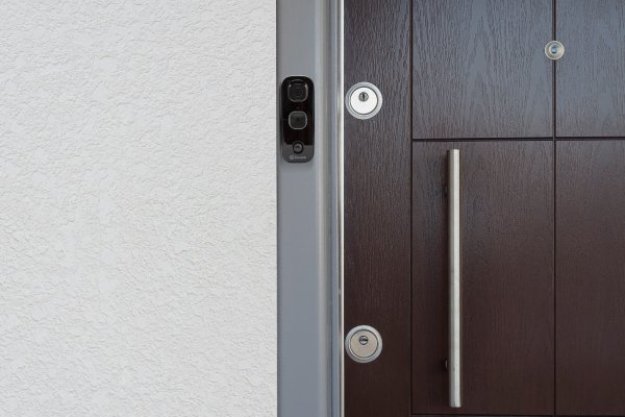Ahead of CES 2021, we were already expecting touchless experiences to ripple throughout every corner of the smart home. Cleanliness and social distancing have proven effective in reducing the spread of germs, so if there’s a possibility to lessen exposure through physical contact, you know it’s an application that companies will want to exploit. That’s exactly what we saw with the touchless video doorbells introduced at CES 2021. On one hand, it seems like a feature that’s practical for the times, but I would argue that it is one of the laziest implementations we’ve come across.
Our natural inclination to touch
I’m pretty sure it’s everyone’s inclination to press the doorbell once they approach a home’s front door. Even with today’s existing video doorbells, you’re still required to press the button to ring the bell. It’s this natural instinct that may prove to be the biggest challenge for touchless video doorbells to become practical. Yes, the Alarm.com Touchless Video Doorbell addresses this issue by not only slapping verbiage on the doorbell explicitly stating it’s touchless, but it works in conjunction with a mat on the floor where visitors are told to stand.

On the flip side, I’m curious about Arlo’s touchless offering. The company announced it during CES 2021 but didn’t provide any details beyond it leveraging ‘Proximity Sensing Technology’ to achieve a touchless experience. Who knows what that entails, but I think companies will need to come up with mechanisms that would help distinguish this touchless ability — mainly because people are just too inclined to press on doorbells.
Why not just roll this out to existing doorbells?
Indeed, this feature is useful in the age of COVID-19, but I’m left wondering how it can be rolled out to existing video doorbells. Seriously, there are ways companies can go about rolling this out so it’s just not exclusive to new models. In fact, I think it’s more feasible than you’d think.

Given how some cams can detect people or faces, the software could be tweaked to determine whether a subject is close enough to the doorbell for it to automatically ring. That’s probably the simplest way to achieve this in some doorbells. Another implementation could be related to using a passive infrared (PIR) sensor in order to detect a person within close proximity to the doorbell. Both solutions are feasible, so I feel it’s something for manufacturers to consider.
Containing the spread of germs has become a public fascination during the pandemic, which is why it’s imperative that a feature such as a touchless doorbell should be rolled out in some capacity to existing doorbells. Adding this feature doesn’t seem too challenging. What will be, though, is changing our habits.
Addressing the approach
Explicitly having verbiage on a doorbell to inform visitors that it is touchless may work for now, but it’s not the best solution — nor does it make them physically attractive. Plus, it wouldn’t work if it were rolled out to older doorbells. What I’d like to see perhaps is a way to inform people visually. Since most doorbells have LEDs that turn on whenever they’re pressed, it would be useful if they could somehow be activated to pulsate as a sort of visual cue. It could be enough to give people pause on approach.
Pair that with an automatic audio message that could be played to let people know as well to not touch the doorbell, you have all the ingredients necessary to change habits. And that would be the unintentional result of bringing this feature to all existing doorbells. It wouldn’t take a lot, so I’d love to see it happen sooner than later.
Editors' Recommendations
- The Ring Battery Doorbell Pro offers premium features without the need for cumbersome wires
- Ring Battery Doorbell Plus offers improved battery life and new aspect ratio
- Is it worth upgrading to the new Google Nest wired doorbell?
- Wemo expands its home security lineup with a smart video doorbell
- Eufy introduces its dual camera smart video doorbell




